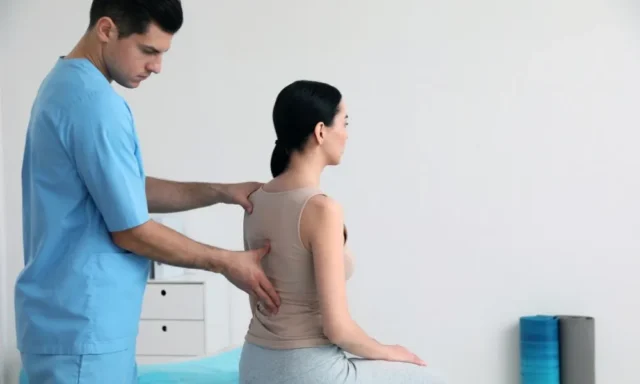Chronic back pain affects millions of people seeking natural alternatives to pharmaceutical interventions and invasive surgical procedures. Chiropractic treatment addresses the root causes of spinal dysfunction through manual therapy, structural realignment, and comprehensive movement rehabilitation programs. Chiropractors Jacksonville, FL utilise evidence-based techniques that target misaligned vertebrae, muscle imbalances, and pain-inducing restricted joint movement to reduce pain naturally.
Spinal alignment restoration
Vertebral misalignments create cascading effects throughout the musculoskeletal system, generating pain patterns that extend far beyond the initial problem area. When spinal segments lose their proper positioning, surrounding muscles compensate by tightening or weakening, creating imbalances that perpetuate chronic pain cycles. These compensatory patterns place excessive stress on joints, ligaments, and discs while restricting normal movement ranges and nerve function.
Chiropractic adjustments restore proper vertebral positioning through precise manual techniques that address specific joint restrictions and alignment issues. The restoration process involves careful analysis of spinal curves, joint spacing, and movement patterns to identify areas requiring correction. Once proper alignment is achieved, the body’s natural healing mechanisms can function more effectively, reducing inflammation and allowing damaged tissues to repair themselves without pharmaceutical intervention.
Manual therapy techniques
- High-velocity low-amplitude adjustments target specific spinal segments to restore joint mobility and reduce nerve interference
- Soft tissue mobilisation techniques address muscle tension and facial restrictions that contribute to chronic pain patterns
- Flexion-distraction therapy gently stretches spinal segments to relieve disc pressure and improve nutrient flow
- Instrument-assisted adjustments provide precise force application for patients requiring gentler treatment approaches
- Trigger point therapy releases muscle knots and adhesions that refer pain to distant areas of the body
Manual therapy approaches vary based on individual patient needs, pain tolerance levels, and specific spinal conditions present. Chiropractors assess tissue quality, joint mobility, and pain responses to determine the most appropriate treatment techniques for each patient’s unique situation. The combination of different manual therapy methods creates comprehensive treatment plans that address multiple contributing factors to chronic back pain simultaneously.
Movement pattern correction
Chronic back pain often develops from repetitive movement patterns that place excessive stress on specific spinal structures over extended periods. Poor posture, improper lifting techniques, and occupational demands create muscular imbalances that alter normal spinal biomechanics. These altered movement patterns become ingrained habits that continue causing problems even after initial injuries have healed, leading to recurring pain episodes and progressive degeneration. Corrective exercise programs retrain proper movement patterns while strengthening weakened muscle groups and stretching tight structures contributing to spinal dysfunction. Retraining involves identifying faulty movement patterns through functional assessments and implementing specific exercises that restore balanced muscle activation.
Recovery acceleration process
Chiropractic care accelerates natural healing by optimising tissue repair and regeneration conditions. Proper spinal alignment improves blood circulation, lymphatic drainage, and nerve function, all essential to deliver nutrients to damaged tissues and remove metabolic waste products. Enhanced circulation and nerve function create optimal healing environments that allow the body to repair itself more efficiently than would occur with rest alone. The recovery process involves progressive treatment phases that adapt to changing tissue conditions and functional improvements. Initial phases focus on pain reduction and inflammation control, while later phases emphasise strength building and movement pattern correction. This systematic approach ensures that improvements are maintained while preventing re-injury through comprehensive rehabilitation that addresses all contributing factors to chronic back pain development.





